If you think that wolf dogs might be more work to train and live with than other dog breeds, you’d be correct.
In this guide, we’ll be introducing 15 different dogs that look like wolves – those that are larger than your average household domestic pup, have more wolf-like traits, and some that are similar to those you’ve likely seen on TV.
What is a Wolf Dog?
A wolf dog (or “wolfdog”) is a dog breed that has wolf traits. This term is mostly used to refer to a breed that was created from a dog crossed with a wolf, rather than dogs that just have similar coloring to wolves and nothing else.
To be a wolf dog, the dog in question should have some wolf content in their genetics. This can be any percentage of wolf content, your family pet would still be considered a wolf dog with even 2% wolf content. Though, a dog with so little wolf content would be considered low wolf-content. You can also have high and mid wolf content in dog breeds.
Dogs that have wolf content in their genetics are notorious for being more challenging than other domesticated dog breeds. They’re more cautious, more anxious, and are harder to train.
Why Dog Trends Upset the Balance
In the wake of the popular television series Game of Thrones being aired, many fans flocked to breeders in want of larger dogs that have obvious wolf ancestors or dog breeds that offer that wolf-like dog look.
Unfortunately, all trends like this come to an end, and there was a steady rise in wolf-like dog breeds needing to be rehomed shortly after the series hype calmed down. According to several news sources (including the BBC, the Washington Post, and other outlets like the National Geographic), some breeders tried to showcase “Dire Wolf” breeds, and owners who decided to adopt these kinds of wolf dogs weren’t ready for the responsibility of their new furry friends.
When domestic animals like dogs are used in films and television series, it puts a light on them that thousands of people have access to. The same thing happened with Corgis – but Corgis aren’t wolf dogs, and require significantly less specific care. They’re also a fair bit smaller.
The problem is that these wolf dogs then end up in shelters or abandoned on the street.
So, alongside introducing new pups with these wolf-like traits, we’ll be giving our readers a more informed look at what it means to own one of these dogs so that you can have a happy, healthy pup if you decide to adopt a larger breed.
Wolf Dog Breeds
Siberian Husky
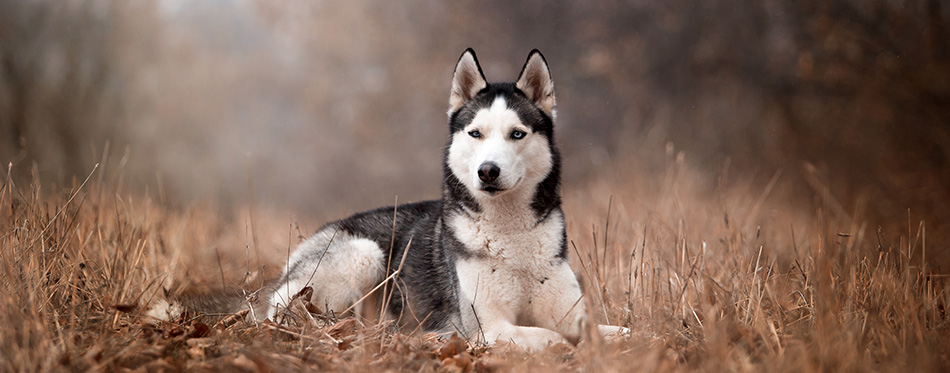
- Height: 21 to 24 inches (Male), 20 to 22 inches (Female)
- Weight: 45 to 60 pounds (Male), 35 to 50 pounds (Female)
- Life expectancy: 12 to 14 years
- Temperament: Gentle, energetic, stubborn
The number one contender for the “Dire Wolf” look without any strange cross-breeding involved, there’s the Siberian Husky.
Siberian Husky dogs have had long-standing appearances in films and television series, particularly if there’s ever any Sled Dog Racing around. Interestingly enough, not a lot is actually known about the history of these wolf-looking dogs, but they make great family pets.
These stunning dogs are huge, powerful, and have strong personalities. Within a pack of dogs, a Siberian Husky with a dominant or strong personality is more likely to come out as the leader of the pack. They have a lot of innate dynamics that show off wild pack traits; the kind you would see in wolves and other wild canines.
For a dog that looks like a wolf, we wouldn’t be surprised if a potential dog owner looked into Siberian Huskies first. Siberian Huskies are usually variation of white to black, with a range of markings. They have the standard arctic wolf (though pure white huskies are rare) and grey wolf look, and can look like a black wolf dog without any problems.
Brown huskies exist, too, which just forces the breed into the wolf dog look even more.
Alaskan Malamute
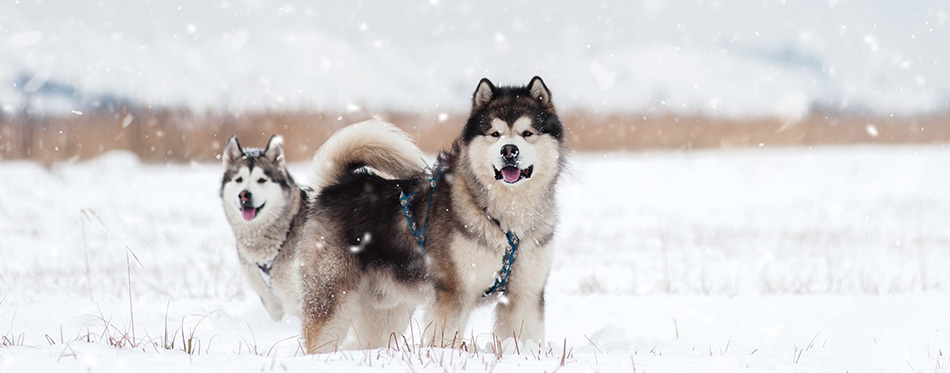
- Height: 25 inches (Male), 23 inches (Female)
- Weight: 84 pounds (Male), 75 pounds (Female)
- Life Expectancy: Up to 16 years
- Temperament: Friendly towards humans, intelligent, stubborn
The Alaskan Malamute is a dog breed that is often mixed with other Malamutes, as well as Siberian Huskies and German Shepherds.
They have markings that are considered wolf-like, but their long coats give them a distinctly non-wolf look. They’re considered to be challenging pets for owners to have, and are often underestimated – and, therefore, end up in shelters.
When properly trained, an Alaskan Malamute can make a wonderful companion. They’re extremely intelligent and strong, but they can be stubborn, too. An assertive owner is required or the Alaskan Malamute will happily take on the home’s alpha position.
Amerindian Malamute / Kugsha
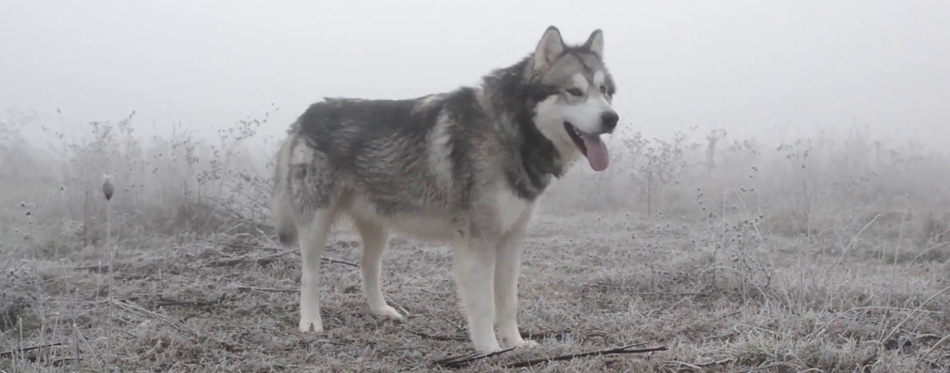
- Height: 20 to 27 inches (Male), 20 to 25 inches (Female)
- Weight: 65 to 106 pounds (Male), 60 to 102 pounds (Female)
- Life Expectancy: 12 to 15 years
- Temperament: Playful, loyal, intelligent
The Amerindian Malamute is also known as the Kugsha. Kugsha are a rare breed whose information is difficult to find.
This dog is a wolf hybrid, thought to have first originated thousands of years ago. They aren’t thought to make good family pets because the wolf side of their genetics is still extremely present and they do not behave like other domesticated dog breeds do.
Having a Kugsha is like having a wolf in your home. They’re difficult to train, prefer lots of open space, and don’t like strangers.
Great Pyrenees
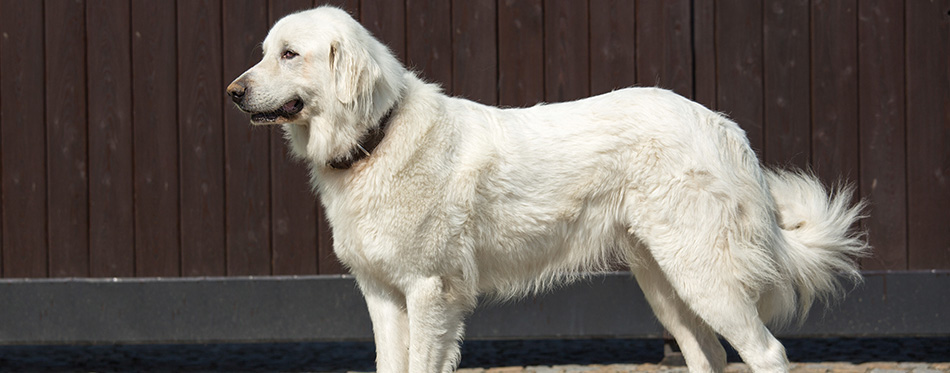
- Height: 27 to 32 inches (Male), 25 to 29 inches (Female)
- Weight: 100 to 160 pounds (Male), 85 to 115 pounds (Female)
- Life Expectancy: 10 to 12 years
- Temperament: Intelligent, independent, loyal
A type of working dog that was bred as a guard dog for flocks, the Great Pyrenees has the ability to become uncontrollable if they are not trained correctly.
Families wanting to adopt this type of dog breed should be aware of how strong they are at full weight. That said, they have an amazing ability to work around their environment, and won’t get in your way or underfoot when inside your home.
As well as acting as a guard dog for flocks, they have been employed as herding dogs. That said, farmers aren’t the only people who have employed the working practices of the Great Pyrenees.
Today, Great Pyrenees dogs are also used in rescue work and as therapy dogs. Like we said, train them well, and you’ll have a highly intelligent pup who has better work ethic than some humans!
Northern Inuit Dog
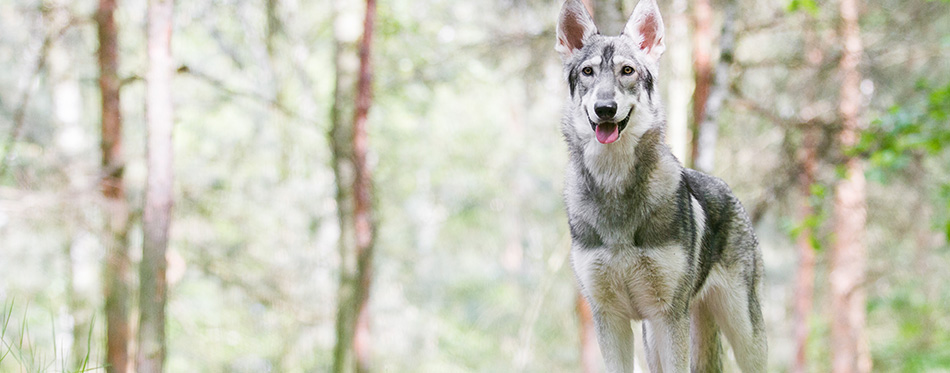
- Height: 25 to 30 inches (Male), 23 to 28 inches (Female)
- Weight: 79 to 110 pounds (Male), 55 to 84 pounds (Female)
- Life Expectancy: 12 to 14 years
- Temperament: Friendly, loyal, stubborn
The original attempt to create a dog that looked like a wolf but had the temperament of a family dog, Northern Inuit Dogs are a mix of the Malamute, Siberian Husky, and the German Shepherd.
Like Siberian Huskies, Northern Inuit Dogs are considered perfect look-a-likes for the Game of Thrones “Dire Wolf” pups that appeared in the television series. Interestingly enough, the Dire Wolves from the series actually are Northern Inuit Dogs, and not Siberian Husky dogs. It’s likely that fans without much experience in dogs thought that Siberian Huskies would be a good alternative.
Though they aren’t as popular as Siberian Huskies, Northern Inuit Dogs are great dogs for families to adopt, though they don’t have the same patience for younger family members that Husky dogs do.
For a wolfdog like the Northern Inuit dog, an owner will need endless patience, will need to have their dog well trained, and should be aware of the separation anxiety issues that are evident in the Northern Inuit breed. They’re great wolf-like breeds to have, but a Siberian Husky may be better for the less experienced dog owner.
Shiloh Shepherd
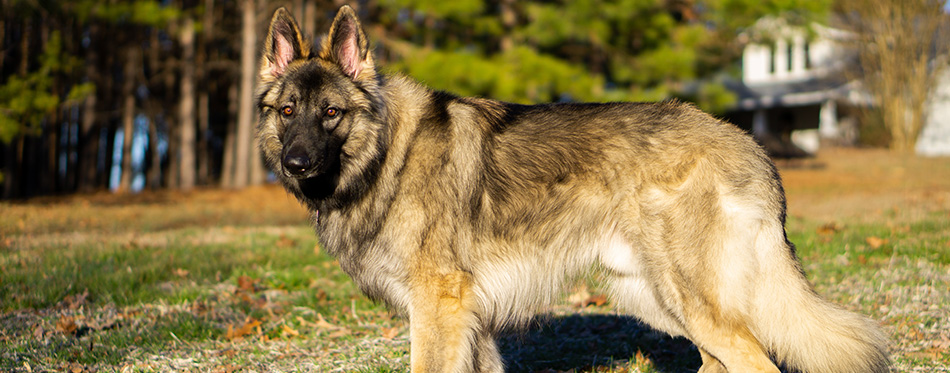
- Height: 28 to 30 inches
- Weight: 100 to 130 pounds (Male), 80 to 100 pounds (Female)
- Life Expectancy: 9 to 14 years
- Temperament: Patient, family dog, friendly
Though the Shiloh Shepherd doesn’t have the same wolfdog look as the Siberian Husky and the Northern Inuit Dog, they still have several wolf-like traits that put them on this list of breeds that look like wolves.
From its appearance, the Shiloh Shepherd looks like a German Shepherd crossed with a wolf, which isn’t too inaccurate because their genetic make-up is a combination of the German Shepherd, the Alaskan Malamute, and sometimes a couple of other wolf-like breeds.
A Shiloh Shepherd will require lots of attention, including playtime, exercise, and training. They’re a loyal dog, despite their wolf-like looks, and they respond well to any training that they’re given.
Beyond their suitability as a dog for families, this breed is also made up of working dogs that enjoy being watchdogs and guard dogs.
German Shepherd
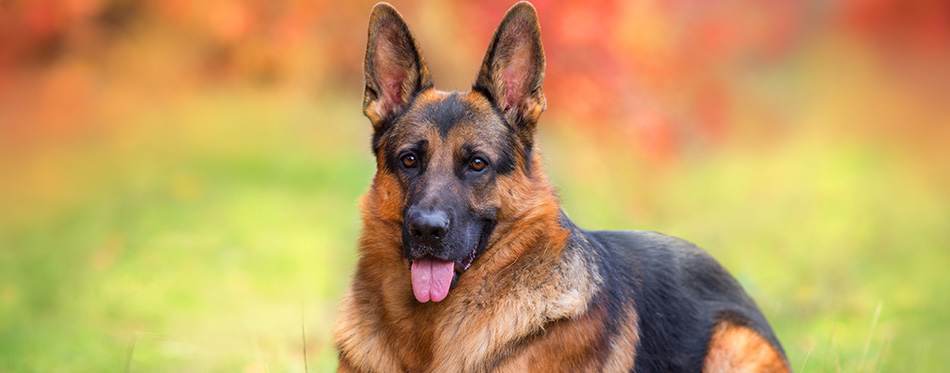
- Height: 24 to 26 inches (Male), 22 to 24 inches (Female)
- Weight: 66 to 88 pounds (Male), 49 to 73 pounds (Female)
- Life Expectancy: 9 to 13 years
- Temperament: Intelligent, protective, loyal
The standard German Shepherd is a black and brown dog of large size with a friendly nature. The brown and black coat German Shepherd is a common canine that is popular with a range of dog owners.
Though the common coat of this breed isn’t too wolf-like, there exists variants of the German Shepherd breed with both solid white and solid black coats. These variants are more along the lines of dog breeds that look like wolves.
German Shepherds are intelligent dogs known for their bravery and kindness. They make an excellent domestic dog, but are also great working dogs.
As family dogs, it’s better to raise German Shepherds alongside children, rather than introducing an adult dog to a family that has young children. German Shepherds that are socialized when they’re younger have a better chance of gaining a natural instinct to guard any children in the family. Your pup will be as loyal to your family as a wolf is to its pack.
It’s best to remember that these dogs are a working breed of dog, though. Your pet pooch is still going to need some solid training and daily exercise so that they are stimulated enough.
Canadian Eskimo Dog
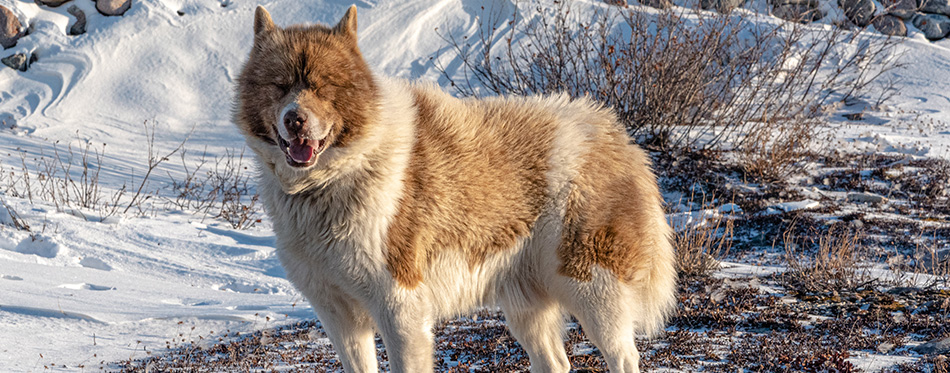
- Height: 23 to 29 inches (Male), 20 to 24 inches (Female)
- Weight: 66 to 88 pounds (Male), 40 to 66 pounds (Female)
- Life Expectancy: 10 to 15 years
- Temperament: High energy, alert, loyal
Another breed of Inuit Dog is the Canadian Eskimo Dog. These stunning dogs look a little like a Western-style Shiba Inu (with its build and tail) that has wolf features and coloring.
The Canadian Eskimo Dog is considered to be one of the oldest, rarest breeds in the dog world. They have survived the threat of extinction, but remain uncommon dogs to see around. Like many other wolf-like dogs, they are a working class dog breed from the arctic.
As a canine that is used to colder places, you aren’t likely to see the Canadian Eskimo Dog in many places outside of North America. These are amazing Sled Dogs, and can be great family pets if you live in the right environment for a dog that acts like a wolf and prefers to sleep in snowbanks.
These wolf-like dogs love to run, explore, play, and be part of a pack or team. They’re active, high-energy dogs that can make good pets for families, but are better suited to cold environments where they can be working dogs. They aren’t quite the kind of wolf doppelgangers that some dog owners may be looking for, but they’re perfect for a Dog Sled team.
Swedish Vallhund
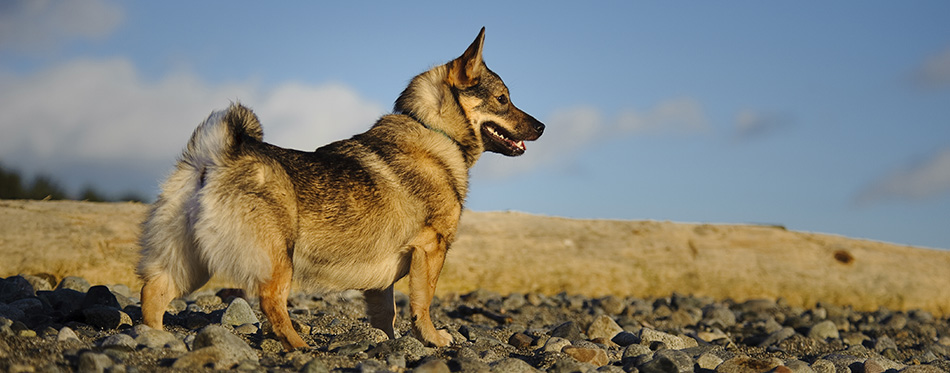
- Height: 12.5 to 13.5 inches (Male), 11.5 to 12.5 inches (Female)
- Weight: 20 to 31 pounds (Male or Female)
- Life Expectancy: 12 to 15 years
- Temperament: High-energy, active, friendly
Another Corgi-like dog breed with short legs and a fluffy tail, we have the Swedish Vallhund. Immediately upon seeing this dog, you will notice how its coloring is like a wolf, but its build makes it seem like a Corgi. Unlike the other breeds that we’ve talked about so far, this is a very small dog that is only wolf-like in coat color.
Vallhund means Herding Dog. The Swedish Vallhund was originally bred to herd cattle, which lends the breed even more Corgi-like attributes. This, dear readers, is a winter Corgi.
Swedish Vallhunds, for all the jokes we can make about them being fake Corgis, are loud, high-energy, and extremely playful. They can be a good pet for families, sure, but their incessant barking makes them better as a guard dog. They need a lot of exercise and playtime to function properly and stay healthy.
Finnish Lapphund
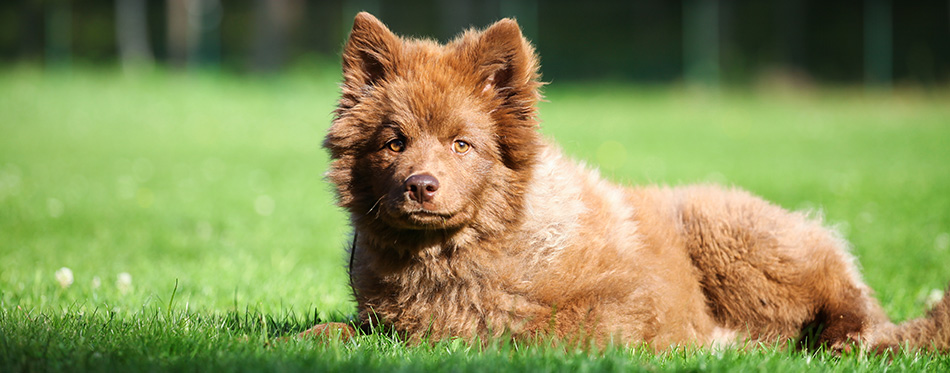
- Height: 18 to 20.5 inches (Male), 16 to 18.5 inches (Female)
- Weight: 33 to 53 pounds (Male and Female)
- Life Expectancy: 12 to 15 years
- Temperament: High energy, friendly, active
Another fake Corgi, the Finnish Lapphund is a purebred dog that was bred to herd reindeer in Lapland. They really do look like Corgis, just with a longer fur coat!
This fluffy canine breed prefers colder environments, lots of playtime, plenty of exercise, and being social with their family.
If they aren’t employed as a herding dog, the family that adopts them should be made aware that they will need a lot of attention. Because they are so high-energy, it would be better for any Finnish Lapphund to be placed in a family that has children to help exercise the dog.
Czechoslovakian Wolfdog
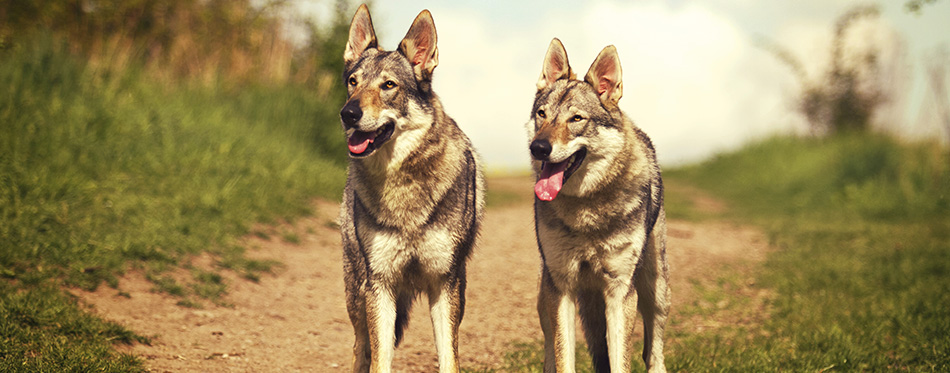
- Height: 26 to 28 inches (Male), 24 to 26 inches (Female)
- Weight: 54 to 60 pounds (Male), 44 to 54 pounds
- Life Expectancy: 13 to 16 years
- Temperament: Loyal, playful, fearless
A dog that looks like a wolf for sure, the Czechoslovakian Wolfdog has everything from the personality traits to the look for a true “wild wolf” dog breed.
The Czechoslovakian Wolfdog is a relatively new dog breed that was bred with the temperament of a German Shepherd in mind. Despite their wilder look, they are very playful and curious pups from a breed that has the strength of a Carpathian Wolf. Originally, they were bred as attack dogs back in the 80s, but now they’re employed as working dogs for more modern tasks.
They can be family dogs, but it isn’t really recommended because they need such a firm hand in training and will, like other wolfdog breeds, take over if they don’t have a strong leader to follow.
They also require daily mental stimulation in the form of training and exercise. They wouldn’t go amiss in a home that has a lot of land for a Czechoslovakian Wolfdog to explore at its own leisure.
Interesting fact: Pre-2008, the Czechoslovakian Wolfdog was still classified as a dangerous animal in the United Kingdom. Today, they still can’t be owned as pets in every state because of the percentage of wolf in their genetics.
The Czechoslovakian Wolfdog is considered a Wolf Hybrid dog, despite only 6 or so percent of their DNA belonging to the Canis Lupus (Wolf) and the rest to the German Shepherd breed. A few years ago (2019), there was a study that showed that this Wolfdog had 11 to 12 percent gray wolf in their ancestry, due to the gray wolf DNA that exists in German Shepherd dog ancestry as well.
Belgian Tervuren
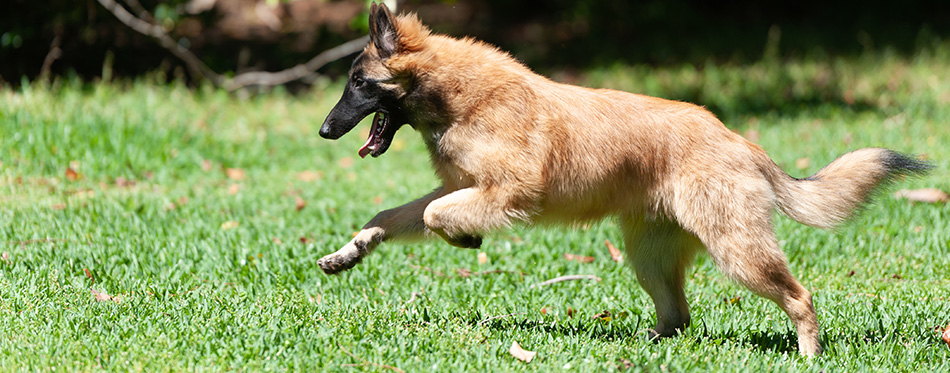
- Height: 23 to 26.5 inches (Male), 21 to 24.5 inches (Female)
- Weight: 55 to 70 pounds (Male), 40 to 55 pounds (Female)
- Life Expectancy: 12 to 14 years
- Temperament: Intelligent, energetic, sensitive
Considered the more elegant of the Belgian sheepdog breeds, the Belgian Tervuren is a great herding dog that works wonderful with other people and dogs.
This breed is intelligent. It’s best to ensure that they get plenty of exercise and mental stimulation, or you will find that they quickly stop performing at their best. For families thinking of adopting a Belgian Tervuren, know that this breed has separation anxiety and should not be left alone at home for long periods of the day.
The Belgian Tervuren is a charming dog to have as a pet. They are accomplished working dogs, with many employed as Police Dogs, as well as Therapy Dogs. Others have done well as Sled Dogs, while some become show dogs and train in agility and obedience.
American Alsatian
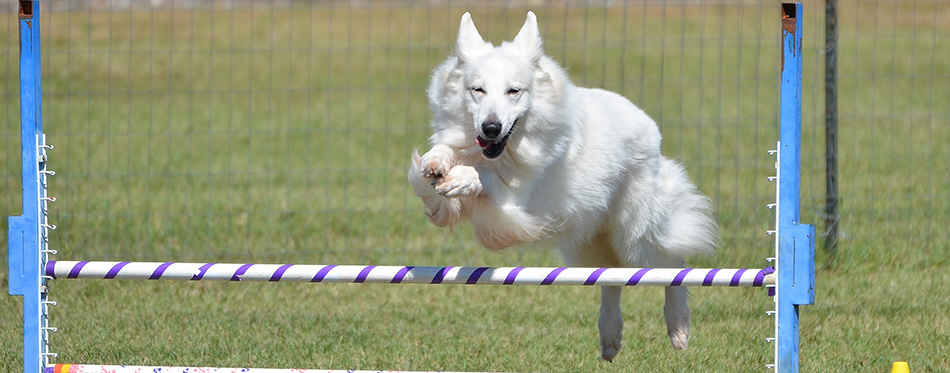
- Height: 25 to 28 inches (Male), 24 to 27 inches (Female)
- Weight: 79 to 120 pounds (Male), 75 to 100 pounds (Female)
- Life Expectancy: 9 to 13 years
- Temperament: Loyal, intelligent, calm
American Alsatians were bred in the 80s to look like Dire Wolves. As a replacement for Dire Wolves, they aren’t as popular as, say, Siberian Husky dogs, but their sole purpose was to become a replacement for the lost wolf breed.
Although they were bred to replace Dire Wolves, American Alsatian dogs are great family dogs. They make perfect companion pets to anyone who doesn’t interact with many strangers (the Alsatian does not like strangers, though they will not be aggressive towards them), and are usually incredibly calm.
If your American Alsatian is not calm, they likely haven’t had enough exercise that day. An Alsatian needs their daily exercise in order to stay level-headed. This is the kind of dog that is unbothered by loud noises, and will be quiet when you aren’t home.
However, the breed gets incredibly attached to their family. They are affectionate and loyal, and they choose to stay in the comfort of their homes. The American Alsatian does not require a lot of space at home, and they can adapt to a variety of environments. In hotter climates, ensure that your Alsatian stays cool and well-cared for.
Saarloos Wolfdog
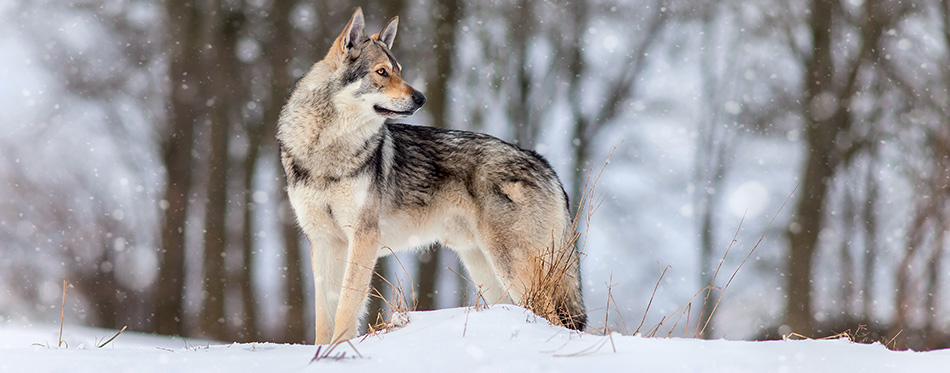
- Height: 25 to 30 inches (Male), 23 to 28 inches (Female)
- Weight: 69 to 90 pounds (Male), 45 to 74 pounds (Female)
- Life Expectancy: 10 to 12 years
- Temperament: Cautious, curious, loyal
Another wolfdog for our list that has the look to match, the Saarloos Wolfdog is a crossbreed that was bred from a German Shepherd and European Wolves. This wolf hybrid was bred into existence back in the mid 1930s, with the original goal to create a strong working dog. Unfortunately, that didn’t work too well because there was too many wolf attributes present in the breed.
They aren’t really the kind of dog that works well as a family dog or search and rescue dog, either. Saarloos have far too much wolf in them to really settle down in a domestic environment and unless they are extremely well-trained, they won’t listen to their human. That said, if you put the effort and time into training this wolf hybrid breed, and you have a large, open space for them to live in, it’s possible to have a Saarloos as a companion.
Alaskan Noble Companion Dog
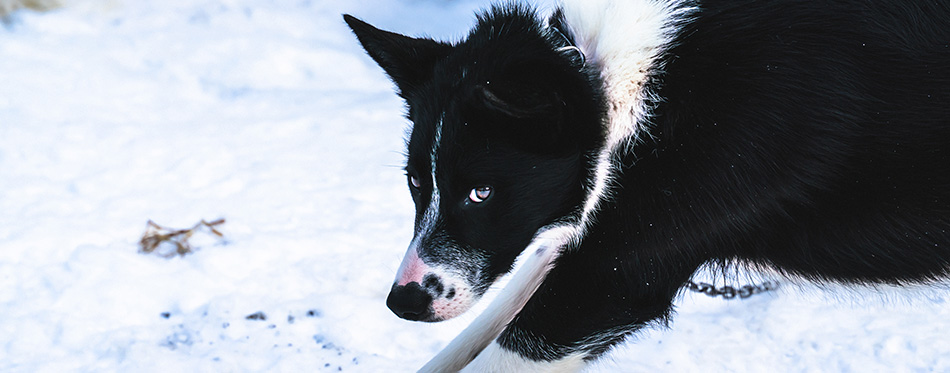
- Height: 26 to 33 inches (Male or Female)
- Weight: 60 to 110 pounds (Male or Female)
- Life Expectancy: 14 years
- Temperament: Anxious, alert, active
The Alaskan Noble Companion Dog certainly has the wolf look, but they aren’t the best dog breed for new dog owners to attempt to train. Alaskan Noble Companion Dogs are fairly new on the list of dog breeds, and gained popularity for their obvious wolf-like looks.
There is a solid wolf-dog connection in this breed, but there is debate on whether or not there is any percentage of wolf still in their genetics – they certainly have wolf ancestry, though, considering the breeds they come from! The Alaskan Noble Companion Dog is a cross between Alaskan Malamutes, Siberian Huskies, and German Shepherds.
Not too much is known about this breed because of how new it still is. They are reported to be affectionate and playful as pets, but are also said to be aggressive and very cautious. Perhaps, as a new breed, no one quite knows how to handle these dogs yet and that’s what’s causing the issues.
One thing is certain, though: Early socialization is the key to having a Alaskan Noble Companion Dog that is comfortable around other humans and animals.
FAQs:
Q: Is a Samoyed a wolfdog?
A: Samoyed dogs are part of the Spitz breed family, which is a group of dogs that are closely related to wild wolves, but they are not wolves, themselves. Samoyed dogs are great indicators of what wild dogs may have once looked like, though! But they’re not wolf dogs and would be a good family pet.
Q: Can a wolfdog be a good working dog?
A: Provided that they’re trained and socialized properly, some wolfdog breeds can become great companion dogs but aren’t usually suitable to become a working dog. A wolfdog retains a lot of wild traits and many are restricted in certain states and countries.
Q: What breeds are like Dire Wolves?
A: The Siberian Husky, the Northern Inuit Dog, and the American Alsatian share enough traits with Dire Wolves that they can look very similar to them. It is not recommended that you adopt a dog just for their aesthetics, though. You may not be able to handle the dog if you are a new dog owner.

